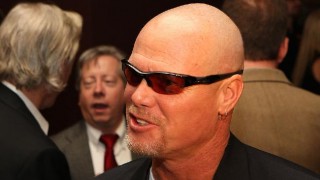
The growing firestorm of concussion claims by former players against the National Football League appears to be coming to an end. On Monday, a federal judge gave initial approval to a deal that stands to pay thousands of retired NFL players for claims related to concussions on the field.
The deal had stood in doubt when the NFL had tried to implement a $675 million cap on total damages. The presiding judge, Anita Brody, had expressed some doubt that $675 million would suffice to pay all the players’ claims. When the NFL agreed to take away the cap, Brody responded by praising the preferability of a settlement, which would give former players relief much more quickly (and with much more certainty) than a protracted lawsuit that would even make recovery an iffy proposition. All the while, the mental and physical conditions of the plaintiffs would keep deteriorating.
The current class of former players filing suit numbers over 4,500. Some have added accusations of fraud to their claims because of the way the teams and the league have dealt with concussions. Some of the more famous names in the class are former Chicago Bears quarterback Jim McMahon, who has developed dementia, and Tony Dorsett, former running back for the Dallas Cowboys.
The terms of the settlement indicate a duration of a minimum of 65 years, giving at least $1 million each to any retirees who contract such neurological difficulties as Lou Gehrig’s disease. Plaintiffs’ attorneys Christopher Seeger and Sol Weiss praise the settlement as being an extraordinary step for retired players as well as their families. The most attractive benefit is the fact that even players who are presently healthy but are worried that symptoms may appear decades down the road have protection under the concussion settlement.
Originally, the $675 million cap on payouts had accompanied $75 million to pay for baseline testing, $112 million in legal fees to the lawyers for the players, and $10 million for education and medical research, leaving the league to pay over $870 million.
While the new settlement gets rid of the total cap, there is a formula to calculate payouts for individual former players that takes illness and age into account. For example, a 50 year old former player who develops Alzheimer’s disease would receive $1.6 million. Early dementia for an 80 year old (on initial diagnosis) would bring $25,000. A young former player who developed Lou Gehrig’s disease would get $5 million.
Some have criticized the deal for getting off relatively lightly, since the league’s annual revenues currently average about $10 billion. Even with no cap, though, most experts believe that the total payments will end up totaling around that amount. Players who do not agree that the settlement is fair have a hearing set for November 19 to air their concerns and then have the choice to op out of the agreement.
What would make opting out risky is that the players would have to prove that their injuries came from NFL concussions rather than those that happened at other points in their life. The first settlement had also kept claimants from going after the NCAA for a separate verdict, but that part of the agreement came out. Currently, the NCAA faces a concussion lawsuit in Illinois. For the time being, the settlement is receiving mixed reviews. As time goes by, it will be interesting to see how claimants respond, and how many stay in the class now that the NFL concussion settlement has received approval.
